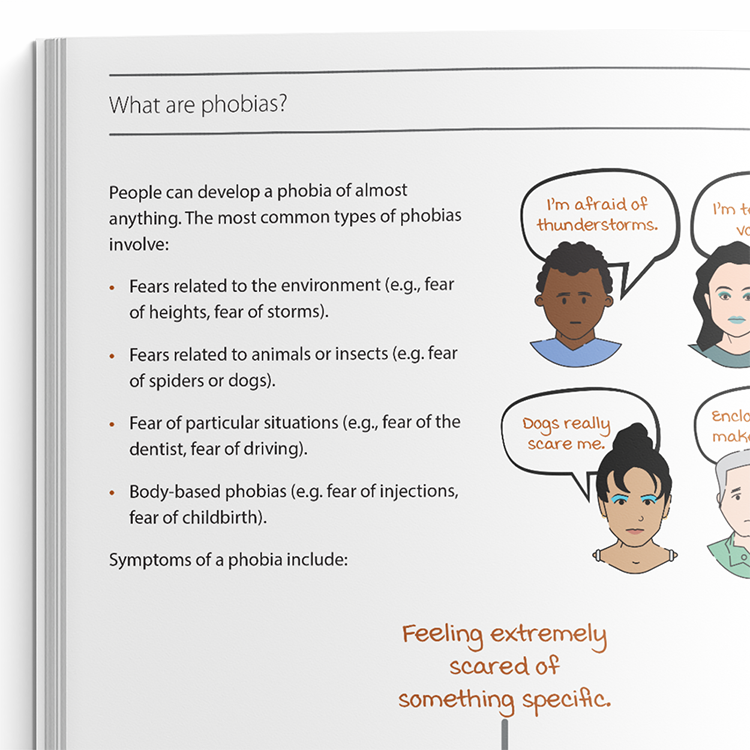Guide (PDF)
A psychoeducational guide. Typically containing elements of skills development.
An accessible and informative guide to understanding fears and phobias, written specifically for clients.

A psychoeducational guide. Typically containing elements of skills development.
To use this feature you must be signed in to an active account on the Advanced or Complete plans.

Our ‘Understanding…’ series is a collection of psychoeducation guides for common mental health conditions. Friendly and explanatory, they are comprehensive sources of information for your clients. Concepts are explained in an easily digestible way, with plenty of case examples and accessible diagrams. Understanding Fears And Phobias is designed to help clients with fears and phobias to understand more about their condition.
This guide aims to help clients learn more about specific phobias. It explains what phobias are, common symptoms associated with them, and effective ways to address them, such as cognitive behavioral therapy (CBT).
Designed to help clients understand and learn more about fears and phobias.
Identify clients who may be experiencing specific phobia.
Provide the guide to clients who could benefit from it.
Use the content to inform clients about fears and phobias and help normalize their experiences.
Discuss the client’s personal experience of a specific phobia.
Plan treatment with the client or direct them to other sources of help and support.
It is entirely normal for people to experience fear from time to time. Although uncomfortable, fear serves an important adaptive function, helping individuals stay safe and avoid genuine threats. However, fear can sometimes become excessive, persistent, and disruptive. When intense fear arises in response to specific objects, animals, or situations - and when this fear is clearly out of proportion to the actual level of threat - it may indicate the presence of a phobia.
Phobias can cause significant distress and impair daily functioning. Prevalence estimates suggest that between 3% and 15% of individuals will experience a phobia at some point in their lives. Encouragingly, cognitive behavioral therapy (CBT) is a well-established and effective treatment for reducing excessive fear and helping people overcome phobias.
Just enter your name and email address, and we'll send you Understanding Fears And Phobias (English US) straight to your inbox. You'll also receive occasional product update emails wth evidence-based tools, clinical resources, and the latest psychological research.
Working...
This site uses strictly necessary cookies to function. We do not use cookies for analytics, marketing, or tracking purposes. By clicking “OK”, you agree to the use of these essential cookies. Read our Cookie Policy